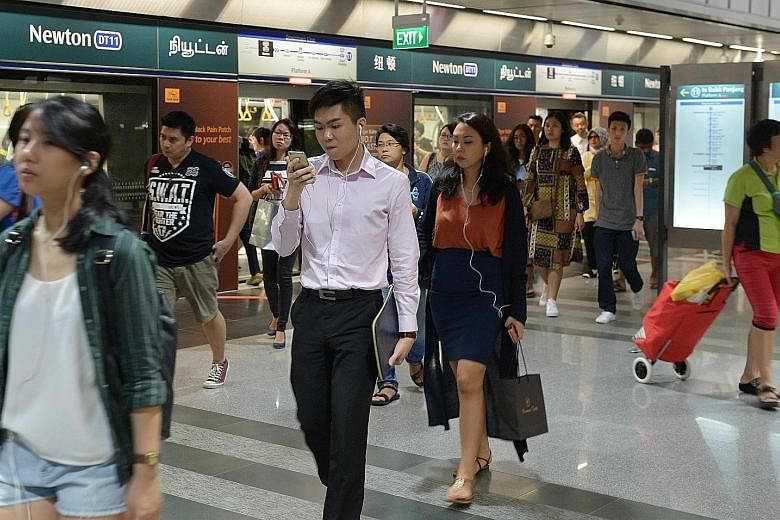More commuters are riding the Downtown Line (DTL), following the opening of its second stage (DTL2) late last year - a 16.6km, 12-station stretch connecting to the north-western parts of the island.
The Land Transport Authority (LTA) said yesterday that average daily weekday ridership has tripled from 83,000 last October, before DTL2 opened, to over 250,000 in the middle of this month.
Ridership has been growing steadily even after the line's opening - in the first quarter of this year it was 223,000, and the figure grew by 6.7 per cent to 238,000 by the second quarter.
But while the LTA has said more commuters are now taking to public transport, encouraging those in the Bukit Timah area - characterised by its affluent private estates - to go car-lite may require a bigger push.
DTL2, which opened last December, starts in Bukit Panjang, with stops in Bukit Timah, including Beauty World and Sixth Avenue, before passing through Little India and Rochor and connecting to the six-station Downtown Line 1 at Bugis.

The LTA said yesterday the average number of journeys on public transport on weekdays along the DTL corridor has increased by about 60 per cent, compared with before DTL2 opened. These journeys include bus or train rides, or a combination of both to reach a destination. "It is likely that more commuters have shifted from driving to taking the DTL," the LTA concluded.
Still, data showed that the bulk of the commuters riding DTL2 in the morning peak periods towards the city are from Bukit Panjang, with fewer numbers getting on at stations along the Bukit Timah corridor.
For example, between 8am and 8.30am on an average weekday in May, a total of 2,670 commuters boarded the train at Bukit Panjang MRT station. But a smaller number of passengers - 595 - got on at Hillview station, and even fewer - 192 - at Sixth Avenue station.
National University of Singapore transport researcher Lee Der Horng believes that those living in private residences in Bukit Timah have not given up their cars, because they face issues of "first- and last-mile connectivity" - travelling between their homes and the nearest MRT station.
"If the MRT can be made more accessible to them, this will further enhance their willingness to give up driving," Dr Lee said. One of the ways could be to introduce a bicycle sharing scheme so residents can cycle from their homes to the nearest station, he said.
The LTA said it is improving the first- and last-mile connectivity. Stations on DTL2 and the upcoming Downtown Line Stage 3, which will connect to the east, will be served by 29km of sheltered walkways.
Meanwhile, the LTA also said DTL2 has helped to reduce the passenger load on other MRT lines during the morning peak hours.
The number of commuters on two heavily used segments on the network - the North-South Line along Bukit Batok-Jurong East, and the East-West Line along Jurong East-Clementi - has dipped by up to 10 per cent.


